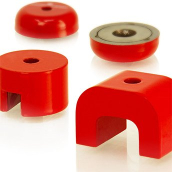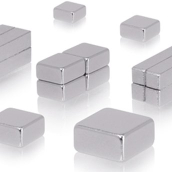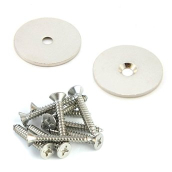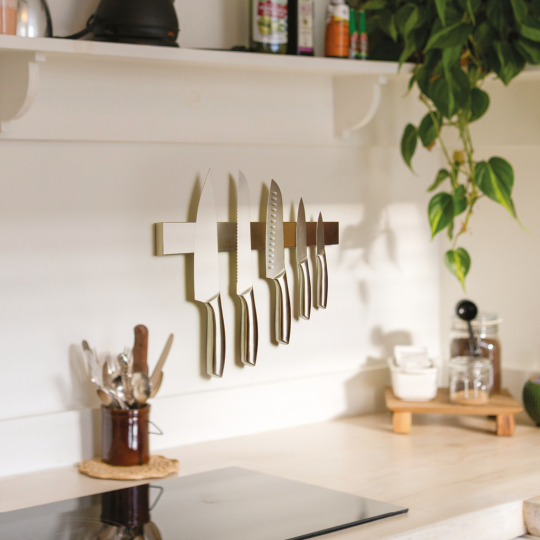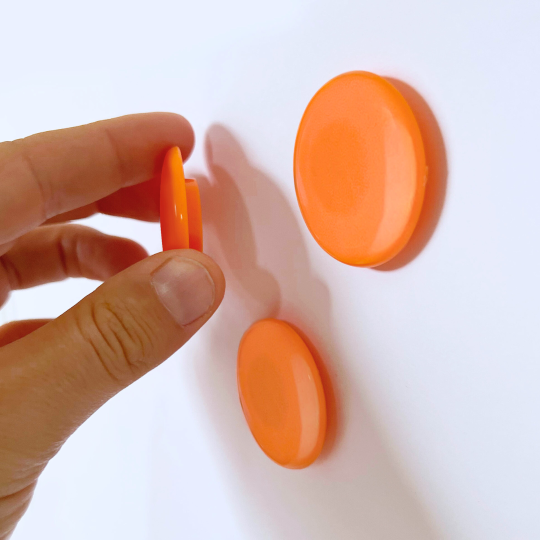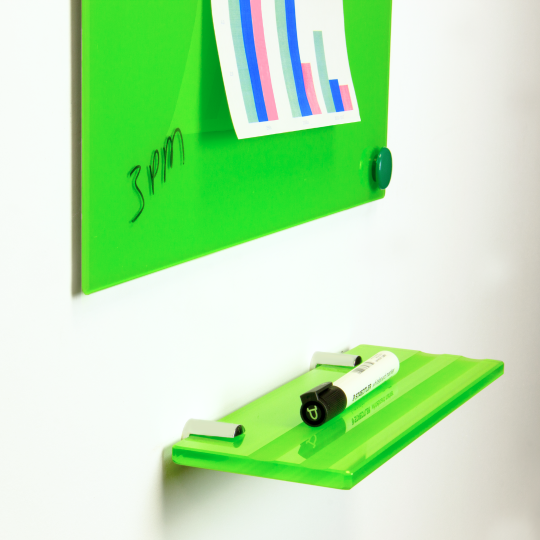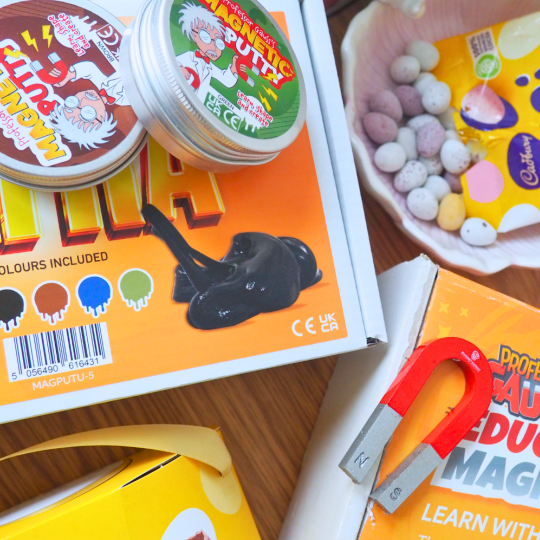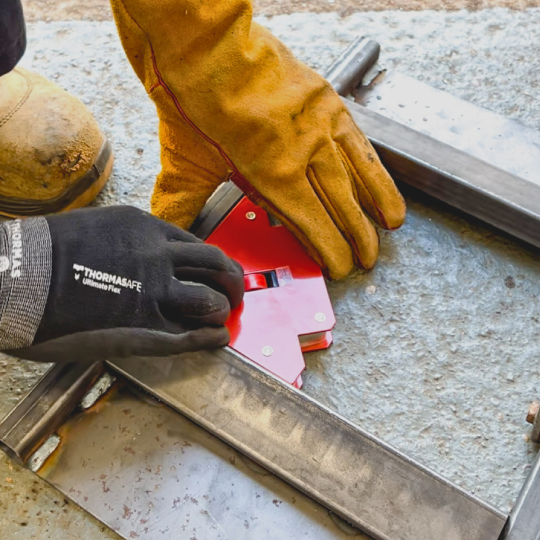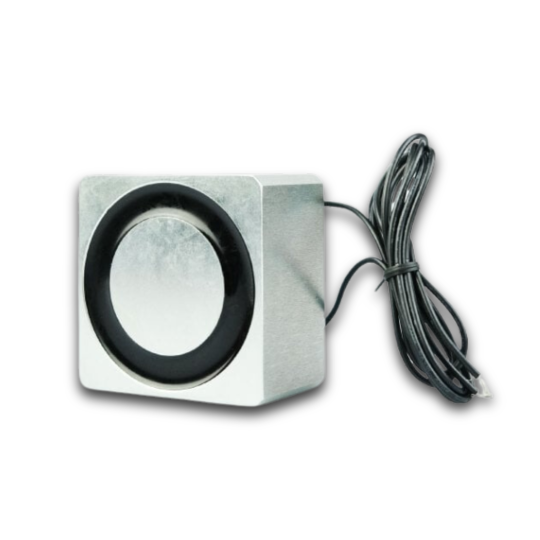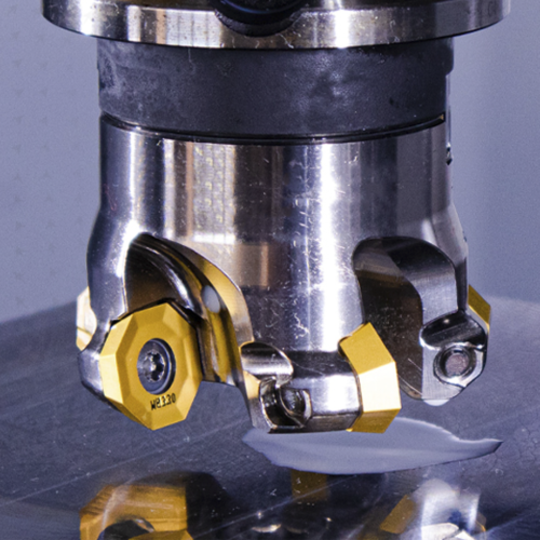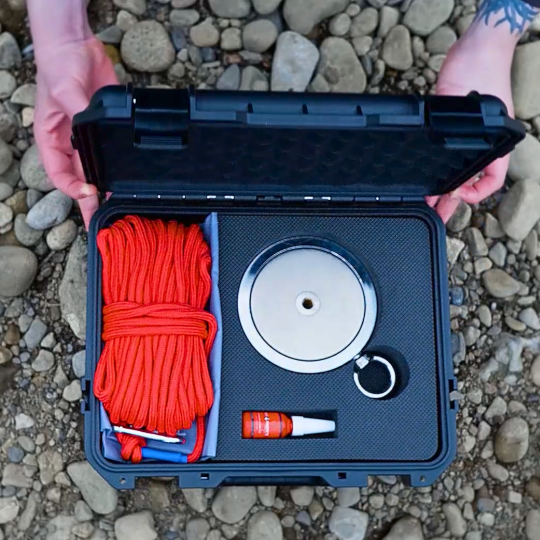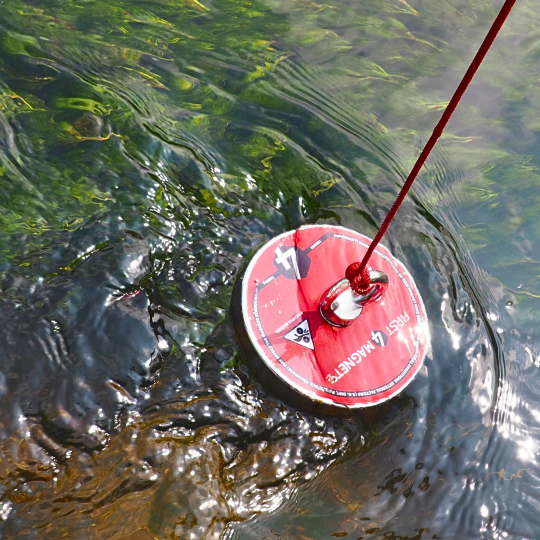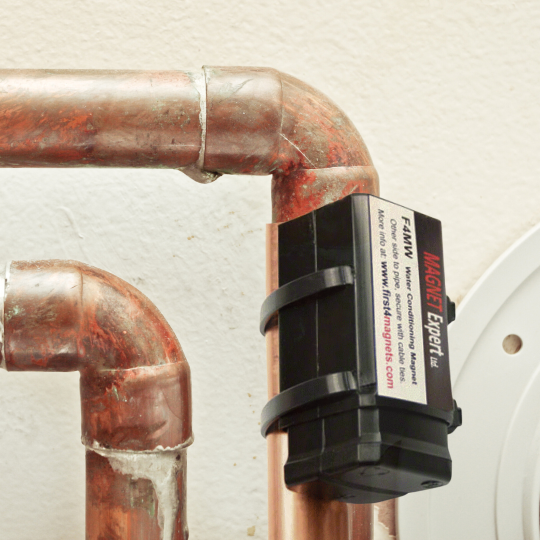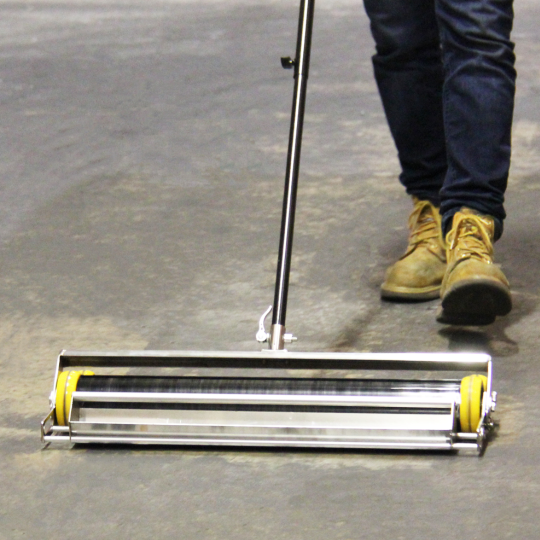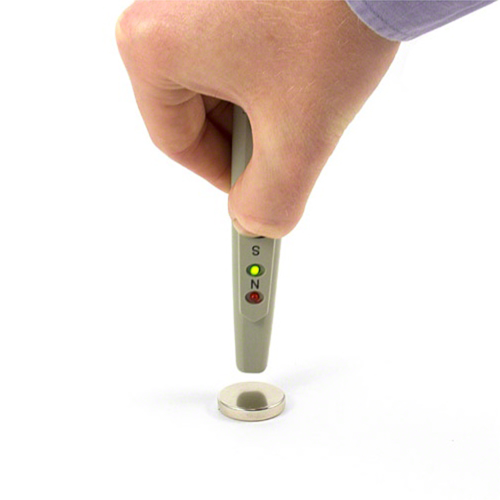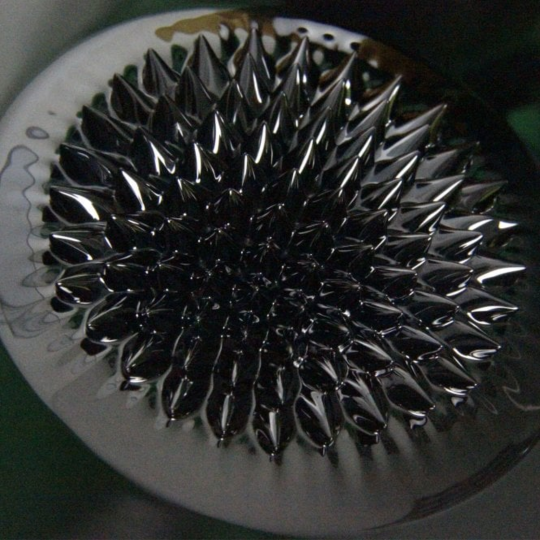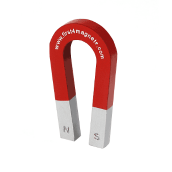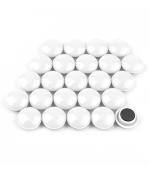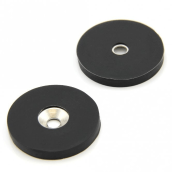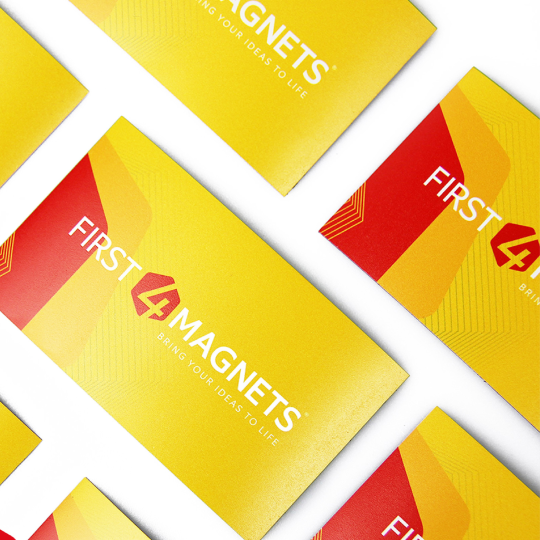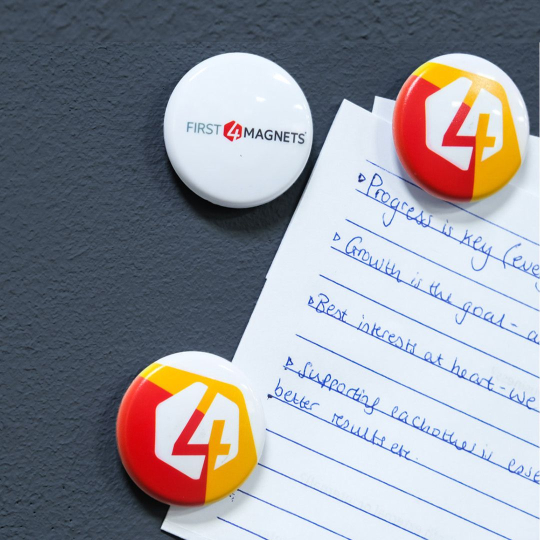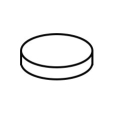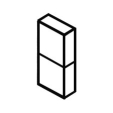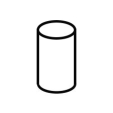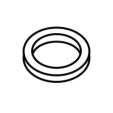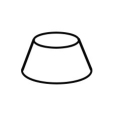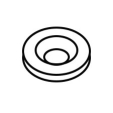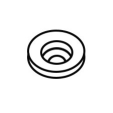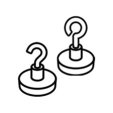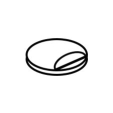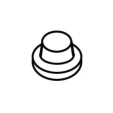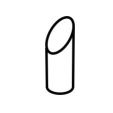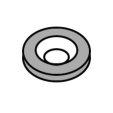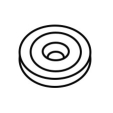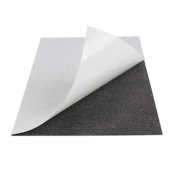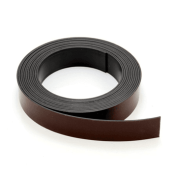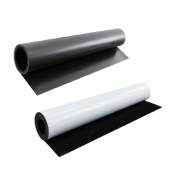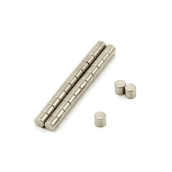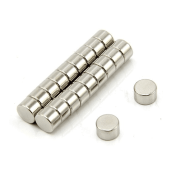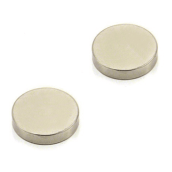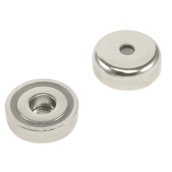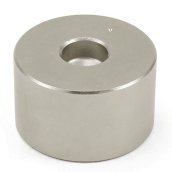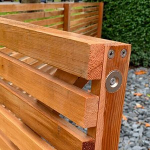A Comparison Of Magnetic Materials At A Glance
There are five types of magnet material that a magnet can be manufactured from:


1 - Neodymium iron boron (NdFeb)
Neodymium magnets are the most powerful magnets available (per unit volume) with the ability to attract 1,000 times their own weight. They have an elaborate manufacturing process of vacuum melting, milling, pressing and sintering.
These magnets can then sliced into smaller magnets or ground to tighter tolerances using diamond grinding tools. All neodymium magnets are plated to prevent rusting and are used wherever a very small size and maximum power is needed.
| Strengths | Weaknesses |
| High magnetism | Low operating temperatures |
| Ultra-high resistance to being demagnetised | Poor resistance to corrosion if the plating is damaged |
| High power to volume or weight ratio. |
2 - Alnico
Alnico is cast in a foundry. Patterns are used to make sand moulds and molten magnet material is poured into sand moulds. The patterns, tooling and high cost of Cobalt can make alnico magnets expensive. Alnico can also be manufactured using a sintering process to form smaller and more accurate magnets than those that are formed using a casting technique.
| Strengths | Weaknesses |
| High operating temperature | Low resistance to demagnetisation (pushing two magnets together in repulsion can permanently damage both of them) |
| Good corrosion resistance | High production cost |
| Long-term magnetic stability |
3 - Ferrite (Fe3O4)
Ferrite is manufactured using powder sintering technology and is sintered using exact size tooling into a range of industry standard sized discs, rings and block shapes. An industry sized block is a 150mm x 100mm x 25mm.
These blocks can then sliced into smaller magnets or ground to tighter tolerances. Ferrites are used extensively in loudspeakers and security systems industries.
| Strengths | Weaknesses |
| Moderate operating temperature | Low levels of magnetism mean that magnets have to be relatively large to be effective |
| High corrosion resistance, good magnetic stability | |
| Inexpensive |
4 - Samarium cobalt (SmCo)
Samarium Cobalt is manufactured using vacuum powder sintering technology and is sintered using special tooling techniques into standard disc, ring and block shapes.
These magnets can then be sliced into smaller magnets or ground to tighter tolerances using diamond grinding tools. Samarium cobalt is not as powerful as neodymium but it is still a rare earth high-power material. It offers a high performance per unit volume and is used in high-power applications where long term reliability is critical.
| Strengths | Weaknesses |
| Moderately high magnetism | High production costs |
| High resistance to being demagnetised | |
| Good power to weight ratio. | |
| Medium temperature resistance | |
| High resistance to corrosion |
5 - Magnetic rubber
Magnetic rubber is produced by heavily loading ferrite powder of barium or strontium base into a synthetic rubber or PVC matrix and either extruding to shape or calendaring into thin sheets. Magnetic rubber can be cut with scissors and can be supplied with adhesive backing, bright coloured vinyl facing and is easily cut into special shapes using form cutters.
Each magnet material has many grades and variations to provide a variety of slightly different magnetic properties. More details about different grades of each type of magnet can be found in the relevant section of our Tech Centre.
| Strengths | Weaknesses |
| Flexible | Low magnetic flux density |
| Easy to cut | Low max operating temperature |
| Good corrosion resistance |
The following details give a simple overview of the five Magnet Materials:
| TYPE | COMPOSITION | Br (Gauss) |
Hc (Oesteds) |
BHmax (MGOe) |
DENSITY g/cm3 |
MAX OPERATING TEMP | TEMP COEFICCIENT |
| Neodymium (Properties for common grade N42) |
Mainly neodymium, iron and boron | 13,0000 G | 11,5000 Oe | 42 MGOe | 7.4 g/cm3 | 80 oC | 0.11% |
| Alnico (Properties for common grade Alnico 5) |
Mainly aluminium, nickel, cobalt, iron | 12,500 G | 640 Oe | 5.5 MGOe | 7.3g/cm3 | 500oC | -0.02% |
| Ferrite (Properties for common grade Ferrite 8) |
ceramic materials and iron oxide (Fe2O3), | 3,850 G | 2,950 Oe | 3.5 MGOe | 5g/cm3 | 180 oC | -0.2% |
| Samarium cobalt (Properties for common grade Samarium 2:17) |
Mainly samarium and cobalt | 11,000 G | 9,700 Oe | 28 MGOe | 8.4 g/cm3 | 350 oC | 0.11% |
| Magnetic rubber (Properties for common grade Y) |
Strontium or barium powder and synthetic rubber or PVC | 2,000 G | 1600 Oe | 0.8 MGOe | 3.5 g/cm3 | 50 oC | 0.2% |
- Br = Volume of magnetism
- Hc = Resistance to demagnetisation
- BHmax = Maximum energy product
- Temperature coefficient = Percentage of magnetism lost for each degree Celsius rise in temperature but regained on cooling
